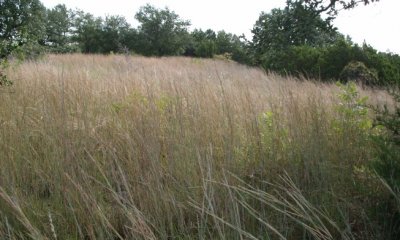
Low Stony Hill 30-38" PZ
Scenario model
Current ecosystem state
Select a state
Management practices/drivers
Select a transition or restoration pathway
- Transition T1A More details
- Restoration pathway R2A More details
-
No transition or restoration pathway between the selected states has been described
Target ecosystem state
Select a state
Mechanism
The Savannah State is resistant to shrub dominance. However, shrubs make up a portion of the plant community in this state, therefore propagules are present. The mean fire return interval in the Savannah State is 7-10 years. Even with proper grazing and favorable climate conditions, lack of fire for 50-100 years will allow woody species to increase in canopy to reach the 35% threshold level. Improper grazing, prolonged drought, and warming climate will provide a competitive advantage to shrubs which will accelerate this process. Tallgrasses will decrease to less than 5% species composition.
Mechanism
Restoration of the Shrubland State to the Savannah State requires substantial energy input. Mechanical or herbicidal brush control treatments can be used to remove woody species. A long-term prescribed fire program may sufficiently reduce brush density to a level below the threshold of the Savannah State, particularly if the woody component is dominated by species that are not fire sprouters. Brush control in combination with prescribed fire, proper grazing, and favorable growing conditions may be the most economical means of creating and maintaining the desired plant community. If remnant populations of tallgrasses, midgrasses, and desirable forbs are not present at sufficient levels, range planting will be necessary to restore the reference plant community.
Model keys
Briefcase
Add ecological sites and Major Land Resource Areas to your briefcase by clicking on the briefcase (![]() ) icon wherever it occurs. Drag and drop items to reorder. Cookies are used to store briefcase items between browsing sessions. Because of this, the number of items that can be added to your briefcase is limited, and briefcase items added on one device and browser cannot be accessed from another device or browser. Users who do not wish to place cookies on their devices should not use the briefcase tool. Briefcase cookies serve no other purpose than described here and are deleted whenever browsing history is cleared.
) icon wherever it occurs. Drag and drop items to reorder. Cookies are used to store briefcase items between browsing sessions. Because of this, the number of items that can be added to your briefcase is limited, and briefcase items added on one device and browser cannot be accessed from another device or browser. Users who do not wish to place cookies on their devices should not use the briefcase tool. Briefcase cookies serve no other purpose than described here and are deleted whenever browsing history is cleared.
Ecological sites
Major Land Resource Areas
The Ecosystem Dynamics Interpretive Tool is an information system framework developed by the USDA-ARS Jornada Experimental Range, USDA Natural Resources Conservation Service, and New Mexico State University.
